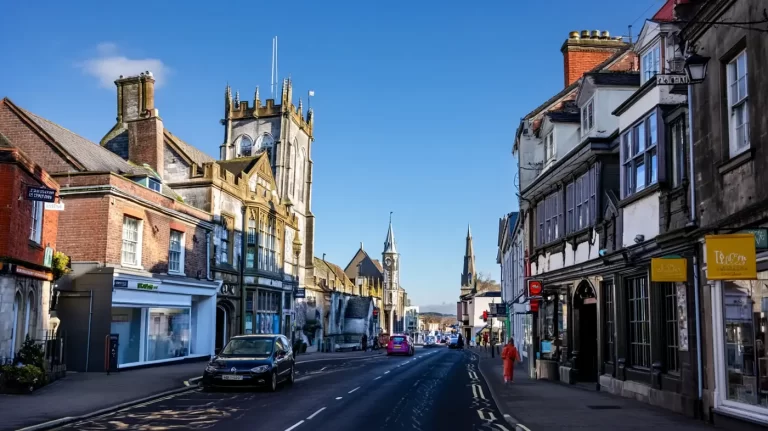Dreaming of life by the sea? Bournemouth might be calling.
With its golden beaches, award-winning gardens, and vibrant mix of coastal charm and urban buzz, Bournemouth is a fantastic place to put down roots.
Whether you’re after a family home in leafy Southbourne or a stylish flat near the town centre, this Dorset hotspot has something for everyone and has been attracting newcomers for years.
But like any property search, it helps to go in with your eyes open.
From schools and transport to local quirks and planning permissions, there’s more to buying here than first meets the eye.
Below, we break down the top considerations to help make your move as smooth as possible, and don’t worry, R.H. Pardy Moving & Storage will be with you every step of the way!
1. Get to Know Bournemouth’s Neighbourhoods
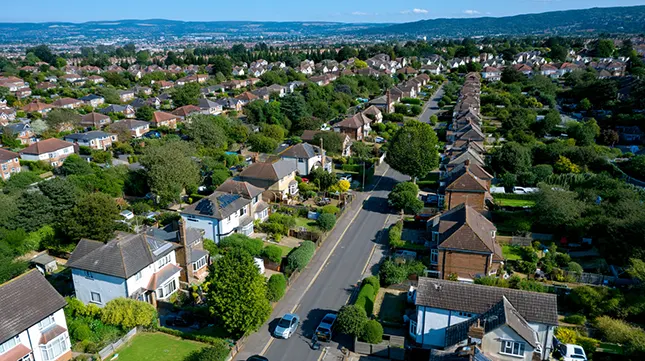
Before diving into the property market, take time to explore the different areas the town has to offer.
Bournemouth isn’t just one big beach town, it’s a patchwork of distinct suburbs, each with its own character which is why exploring thoroughly before you opt for a location is vital for the longer term.
Southbourne offers a laid-back, family-friendly vibe, while Winton is buzzing with students and rental opportunities.
Want seafront luxury? Sandbanks and Canford Cliffs fit the bill, but they come with hefty price tags.
If you’re seeking peace and greenery, Talbot Woods and Queens Park are worth a look.
Research local amenities and even spend a day or two walking around to get a real feel for the community.
The Bournemouth Borough Council (BCP) site is a good starting point for area info.
2. Understand the Local Property Market
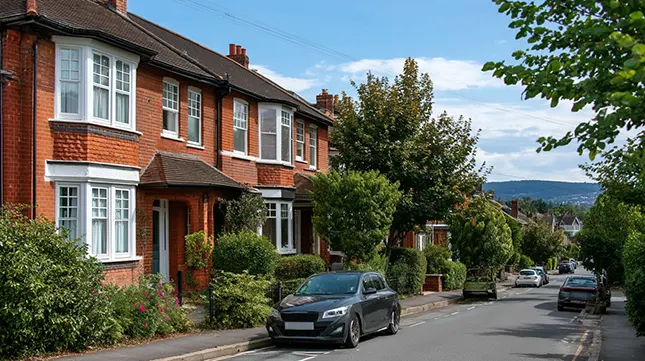
Bournemouth’s popularity has seen house prices rise steadily in recent years.
Many homes, particularly those by the sea, are snapped up very quickly, and often by Londoner’s eager to spend their free time in this great location.
According to Rightmove, the average property price here is above the national average, especially for detached homes which sell for £520,714.
Flats and terraced houses tend to offer better value, particularly for first-time buyers or investors.
Keep in mind that seaside locations command a premium, but properties slightly inland can offer more space for your money.
Use sites like Zoopla and Rightmove to compare prices, and speak to local estate agents for up-to-date insights, tips and general advice.
3. Check School Catchment Areas

If you’re moving with children or planning a family, schools will likely be high on your list of priorities.
Bournemouth is home to some excellent primary and secondary schools, but catchment areas can be extremely tight where good schools are located.
Living just a few streets outside a popular zone can impact your chances of a successful application into a high performing school.
With this in mind, be sure to factor in both current and future education needs when choosing a location.
Ofsted is the go-to for school ratings, and the BCP Council admissions page provides maps and key application dates.
You can also research other on-line school reviews at Locrating and SchoolGuide.
4. Factoring in Transport and Commuting
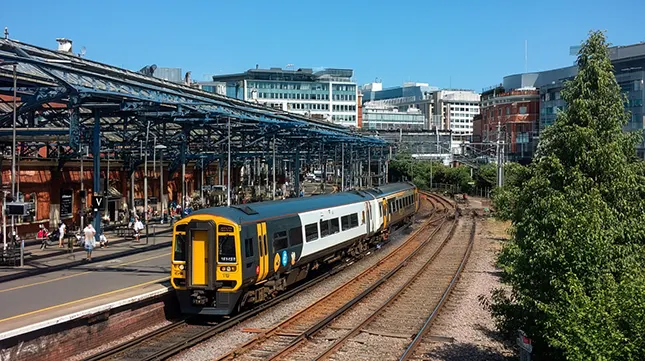
Thinking of commuting to London or working in nearby Poole or Christchurch? Bournemouth is well connected by both road and rail.
The train station links you to London Waterloo in just under two hours, and the A338 gives easy access to the M27 and beyond.
With the West Country to your left, the Isle of Wight in the middle and the South Downs National Park to your right, and numerous other popular sea-side locations dotted along the coast it makes choosing a day out or booking a staycation a breeze.
However, just be aware, traffic can be heavy during peak hours — especially in summer when tourists flood in.
If you’re relying on public transport, check local bus routes with Morebus and rail times with National Rail.
Plus, proximity to transport links may be a key selling point for resale later down the line.
5. Be Aware of Flood Risks and Coastal Erosion
Living near the sea is dreamy — until it isn’t.
Another thing to consider before you make the jump, parts of Bournemouth are at risk of flooding or coastal erosion, particularly properties very close to the cliffs or rivers.
Before putting in an offer, check the government’s Flood Map for Planning. This should automatically be covered in your property searches; however, it doesn’t hurt to check just in-case.
You can also ask your solicitor to carry out an environmental search as part of the conveyancing process.
It’s also worth pointing out that your insurance premiums could be higher in risk zones, so it’s well worth the extra effort of doing your homework upfront.
6. Think About Green Space and Lifestyle Perks
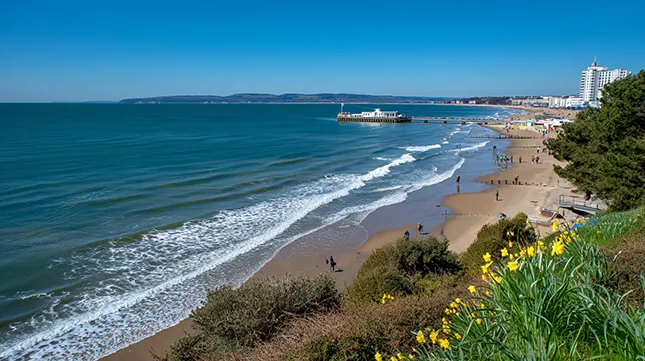
One of Bournemouth’s biggest draws is its lifestyle.
Its seven miles of sandy beaches support all manner of waterside activities. Think beach walks, paddleboarding, and weekend picnics by the sea.
The beach is incredibly popular both with locals and with the almost 6-million-day trippers who arrive annually.
When house-hunting, consider how close your new home will be to outdoor spaces.
The town boasts over 2,000 acres of gardens, parks and play areas, including Meyrick Park and the Central, Upper and Lower Gardens. All 3 gardens have been Green Flag winners since 1999.
If you’re big on outdoor living or have pets and kids, being near green space can really enhance your quality of life.
There is nothing better than a long walk along one of Bournemouth’s 10 beaches to relieve the stresses of a busy day at work, no matter the season!
7. Investigate Local Planning and Development
Bournemouth is evolving fast.
From seafront developments to student housing and retail upgrades, there’s plenty on the cards.
But new builds nearby could impact your view, parking, or peace and quiet.
Check with BCP Council’s planning portal to see if any planning applications are active in your chosen neighbourhood.
If you’re considering renovations or extensions down the line, it’s also good to know what’s likely to be approved.
8. Understand Leasehold vs Freehold
Many of Bournemouth’s flats and converted houses are leasehold, while most detached and semi-detached properties are freehold.
If you’re buying a leasehold property, check the length of the lease, ground rent charges, and any restrictions, for example, on pets or renovations. Leaseholds also come with extra legal work for your solicitor to handle.
A lease under 80 years can be tricky to mortgage and costly to extend.
Make sure your solicitor explains the ins and outs.
The Leasehold Advisory Service is also a great resource and often it is possible to buy the leasehold for less that you may think, depending on the circumstances.
The HomeOwners Alliance has some great help for those considering a leasehold purchase but are unsure of the costs involved.
9. Don’t Forget Removal Logistics When Buying a House in Bournemouth

Not least on your list of things to consider when buying a house in Bournemouth is, how are you going to get your belongings moved?
Whether you’re relocating from across town, just outside Bournemouth or from another part of the UK, having a reliable removal company on your side makes all the difference.
That’s where R.H. Pardy Moving & Storage comes in.
With decades of local experience, flexible moving packages, and secure storage options, we take the stress out of moving day.
From packing up your belongings to navigating Bournemouth’s tricky parking rules, we have got it covered!
We are easy to contact, call us, email us, visit us or simply complete our online quick quote form, we are here when you are ready to relocate to Bournemouth.



